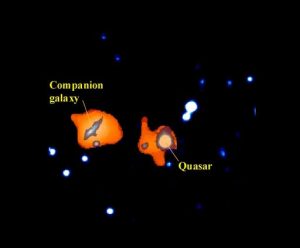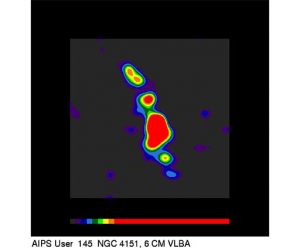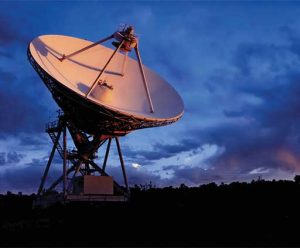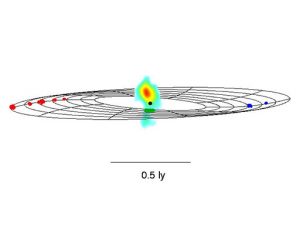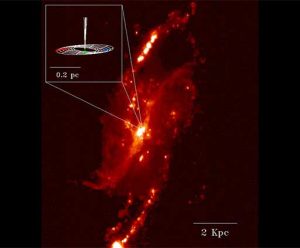Astronomers using the National Science Foundation’s Very Large Array radio telescope have found previously unseen evidence that galaxy collisions trigger energetic quasar activity in relatively nearby galaxies.
VLBA Sees Curved Radio Jet in Nearby Galaxy
New observations with the National Science Foundation’s Very Long Baseline Array indicate that the inner workings of active galaxies may be considerably more complex than astronomers have previously thought.
Mystery of Water Masers in NGC 1052
New observations with the National Science Foundation’s Very Long Baseline Array radio telescope have deepened the mystery surrounding water molecules in a galaxy 65 million light- years away.
On the Origin of Galactic Jets
An extraordinary cosmic laboratory 21 million light-years away is providing radio astronomers their best opportunity yet to decipher the mysteries of the ultra-powerful engines at the hearts of many galaxies and quasars.
New Galaxies from Old?
Astronomers using the Very Large Array radio telescope have found some of the best evidence to date that small, new galaxies can form from material pulled out of older galaxies.
Tremendous Mass Concentration in Strange Galaxy Revealed by VLBA
A dense whirling mass orbiting what almost certainly is a black hole of truly Brobdingnagian proportions has been discovered at the heart of an active galaxy some 21 million light years from Earth.






